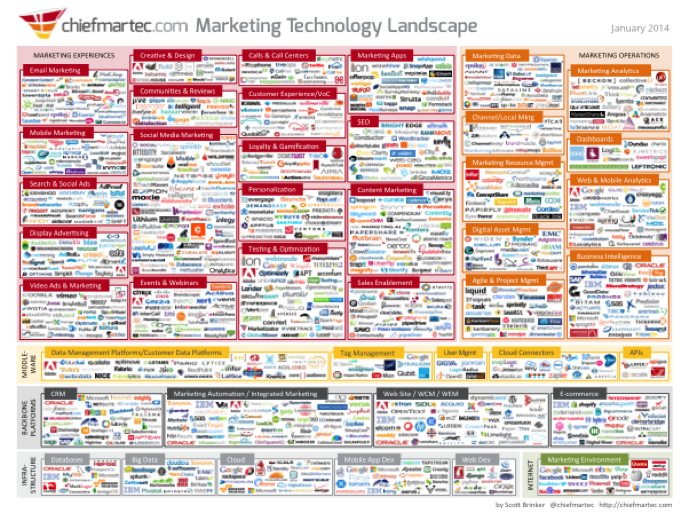The First 90 Days as an Email Marketer
Have you taken on a new role? With the average tenure of email marketers at just under those of politicians and CMOs, new leaders and managers need to think about the first 90 days both tactically and strategically.
I love the book “The First 90 Days" by Michael Watkins. Aside from personalized newborn-baby books, I’ve likely bought more versions of this book as gifts for industry colleagues than any other book. It's so compelling to me because it made me re-evaluate things I knew intuitively but didn’t quite know how to structure.
Many people in new jobs remind me of a local 5K race. When the gun goes off, half the group sprints for the first 100 yards with visions of victory are in their mind, only to fade to a walk/trot after they get out of spectators' view.
The First 90 Days lists 10 core principles, which I wrote down on a yellow Post-It note and taped to my monitor screen. It sat there for close to 5 years:
- Promote Yourself
- Accelerate Your Learning
- Match Strategy to Execution
- Secure Early Wins
- Negotiate Success
- Achieve Alignment
- Build Your Team
- Create Coalitions
- Keep Your Balance
- Expedite Everyone
With these principles as your framework, you can dig in to the six most important things you need to do in your first 90 days.
The worst thing you can do in a new role is make decisions too quickly or too slowly. You need to understand the impact. To paraphrase: If you are faced with a decision, and you don’t have the necessary information to make it, you can recover from not making a decision early better than making a poor decision.
- Know the data:
You may never really know the data, or trust the data, but you need to find out what you have, what you can use, what your gaps are and where you can put a stick in the sand for areas where you want to improve this. Getting data is not the hard part, financially justifying why you have it is really the game. Can you use it? What’s the incremental cost of getting it and sustaining it? This is a harder prospect with more and more data becoming what I call “transient.” Do a data audit, just as if you were a data broker. But first, write down the questions you want to answer and then challenge whether those data points will help you answer these. For instance, you might deem “connecting channels” as a goal, and you want to see how customers interact with your site, social, mobile sites and email. Think about what data you will need, how often you’d need it to be relevant and what else you will need to know about each customer to make this valuable. You will find gaps in the quality of data, the freshness of the data and most likely some IT challenge to combining it. All normal things, you goal should be to recognize the challenges and build plans to address.
- Know the portfolio:
You must do an inventory of the experience. I’ve done this in a variety of ways, but the best is wall boards. Yes, wall-to-wall emails, landing pages and even social posts, literally taped to walls. A collage of content, in color, on the wall and hundreds of them. It’s the best way to grasp trends and content, use and to compare/contrast. One you’ve gathered this, organize into logical categories by goals. If you are a really frequent mailer, do it by episodes (e.g. holidays or promotional episodes). Don’t look at metrics yet outside of trend performance. It's wise to bring in fresh eyes at some point. You are the welder judging the welds and not often the cleanest lens to judge contextually. Once done, color code by “automated” or not, personalized or not. And you can quickly gauge level of effort by time, experience and make snapshot decisions on what to potentially test or change.
- Know the budget and resources:
This is more than a spreadsheet or costs. You need to know what you have access to, what’s fixed, what’s variable and how the organization negotiates this process. You need a “what-if” budget and “what-if” resource pool, internal and external. This goes beyond direct spend. Look at ecommerce and infrastructure budget, social and media spend. Again, it helps to start with the questions you want to answer. What can I spend today? What can I overspend on tomorrow and survive? What is my end of year “hidden budget”, if any? What can I take risks on? Are there other budgets that are indirect? With the right coalition could I get a pet program off the ground? Whose technology investment coattails can I ride? Do these budgets align to the outputs the organizations expects? If you have past experience with budgets, this is the perfect time to do a gut check. If it's the first time, be relentless and unapologetic for asking for this information.
- Know the competitors:
This can be a daunting task. While important early on, I’d stage this research. Stage 1: How are competitors perceived? Who are the competitors that keep you up at night? Stage 2: How are you better/worse (subjectively of course)? Stage 3: What is the internal perception of top competitors and nightmare competitors? Luckily there are many more research tools today to trend competitors. USE THEM to assess promotional strategy, the user experience, the cadence and even a bit of benchmarking to some extent. You will need this to balance #3 discussions.
- Know the tools & vendors:
Glance at the graphic below. If you’re trying to actually read this, STOP! Print it, put it 6 inches from your face and stare at it for 1 minute without blinking. That’s about as coherent as these things are. While the world is complicated, you don’t need to understand this to make sense of your situation. I don’t know a soul who can articulate across all these categories intelligently. Seriously, though, you should understand your tech stack conceptually. Charts like this help you frame it up. What do you have control and/or influence over, and what do you actually pay for? This is critical to know early, because if you read the above principles, you’ll see one of the most important one is "Match strategy to execution." I’m a visual thinker, so I would move this exercise out of a spreadsheet and try to draw it on a white board to understand what has impact on the customer experience. It’s also a perfect time to start building coalitions with your technical groups by doing your due diligence. It’s a great way to have a discussion. Rather than what is this? Restate to “Can you draw this for me?”

- Know yours and others' goals/objectives:
Read my MediaPost article on “TopLine, Bottom Line or Waistline” It will help you think about goals and objectives. Don't merely think about yours. Become hyper-aware of others and look for potential overlaps or conflict. These are great warm-up discussions over lunch. If your goals are engagement, and the social team is focused on brand, and the media team is about filling the funnel, it all seems logical on paper. But, which comes first and last? What are your roles? Are you all counting the same numbers? If your goals include the word "click," "open" and "bounce," you likely haven’t thought about this enough.
The first 90 days is the most invigorating span of your new job. It might seem like an eternity. You want to make an impact today. Still, temper your passion, do the foundation in balance with tactics for the first few months and leave that Post It on your screen til the end of 90 days.

 How to resolve AdBlock issue?
How to resolve AdBlock issue? 
